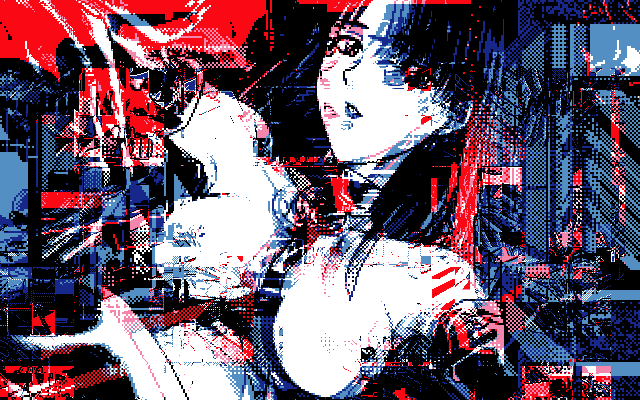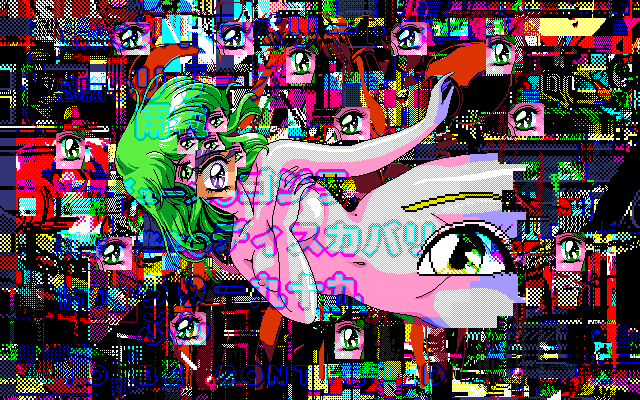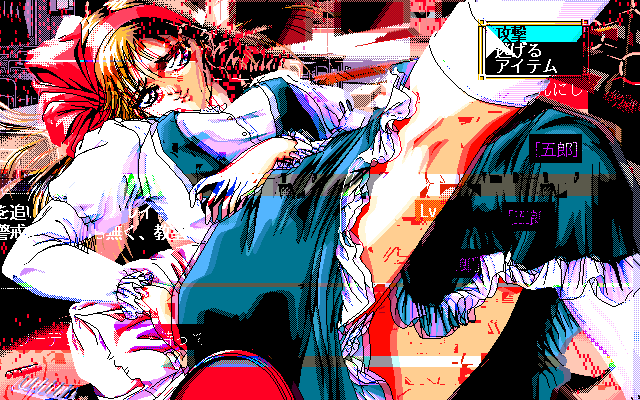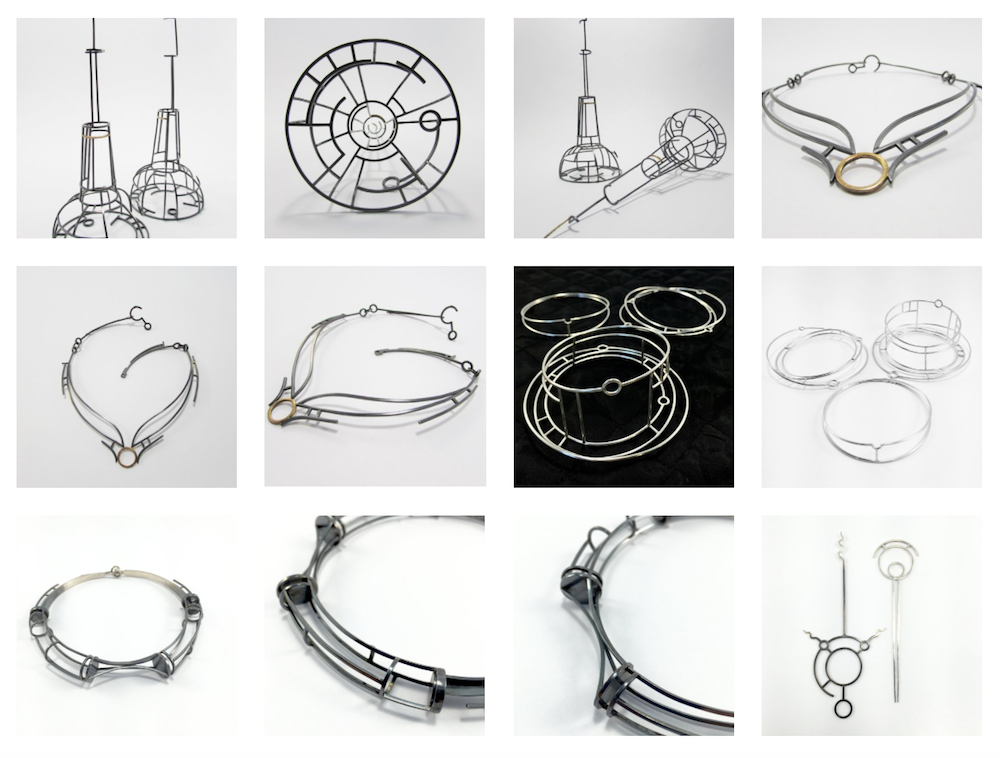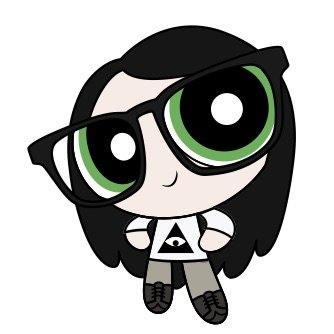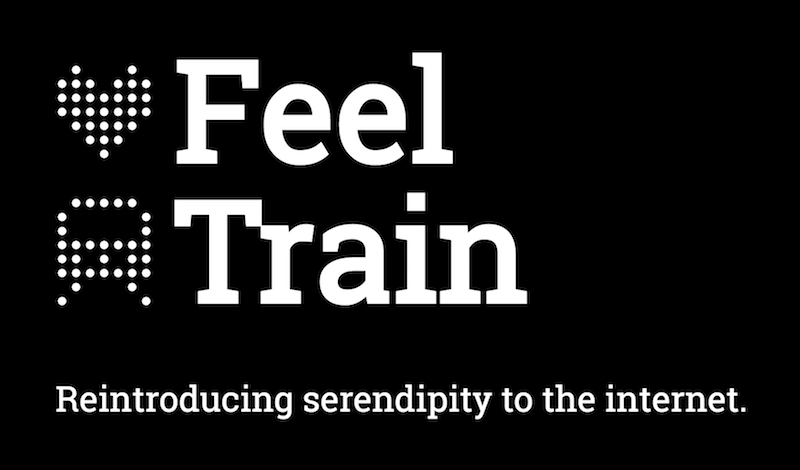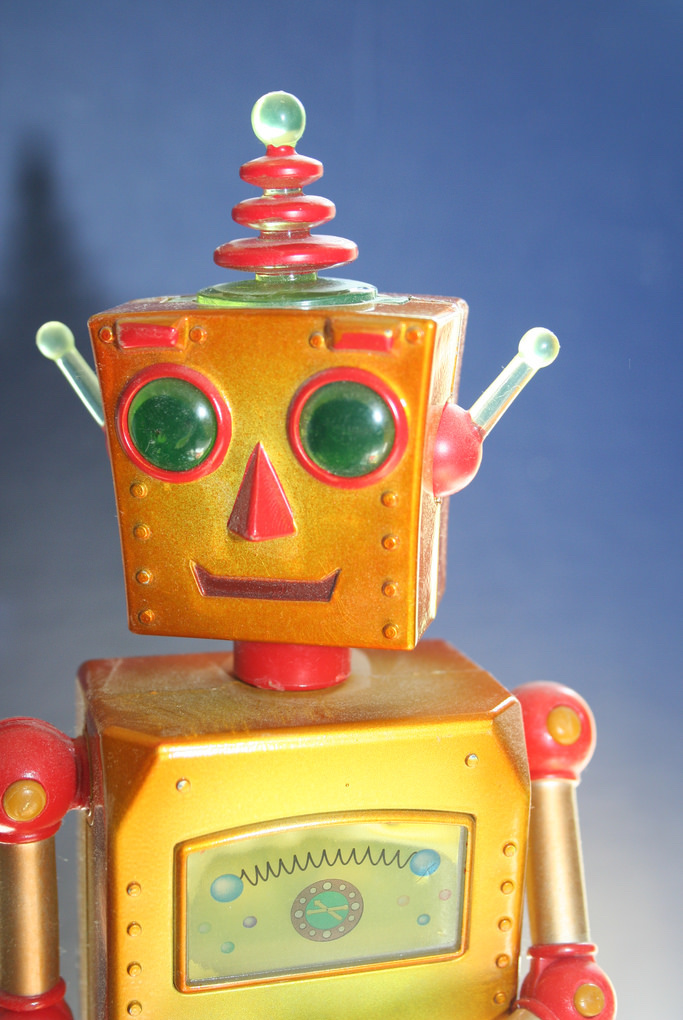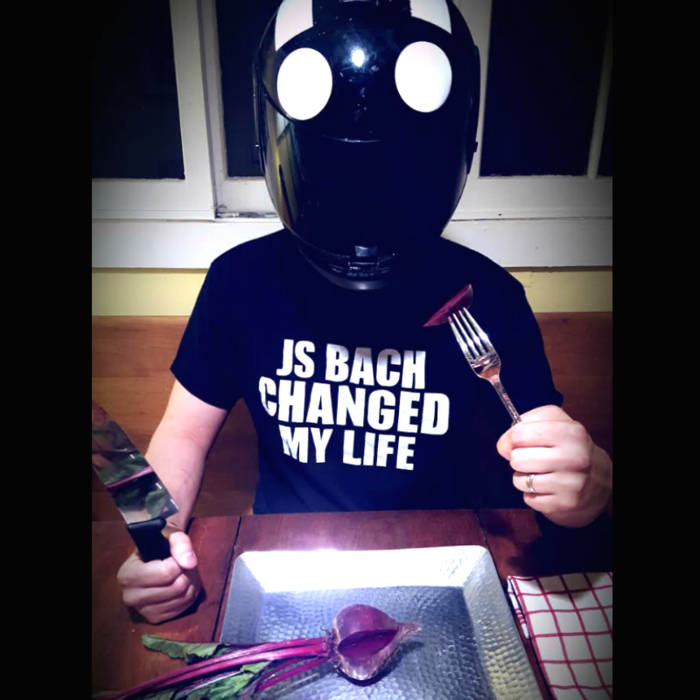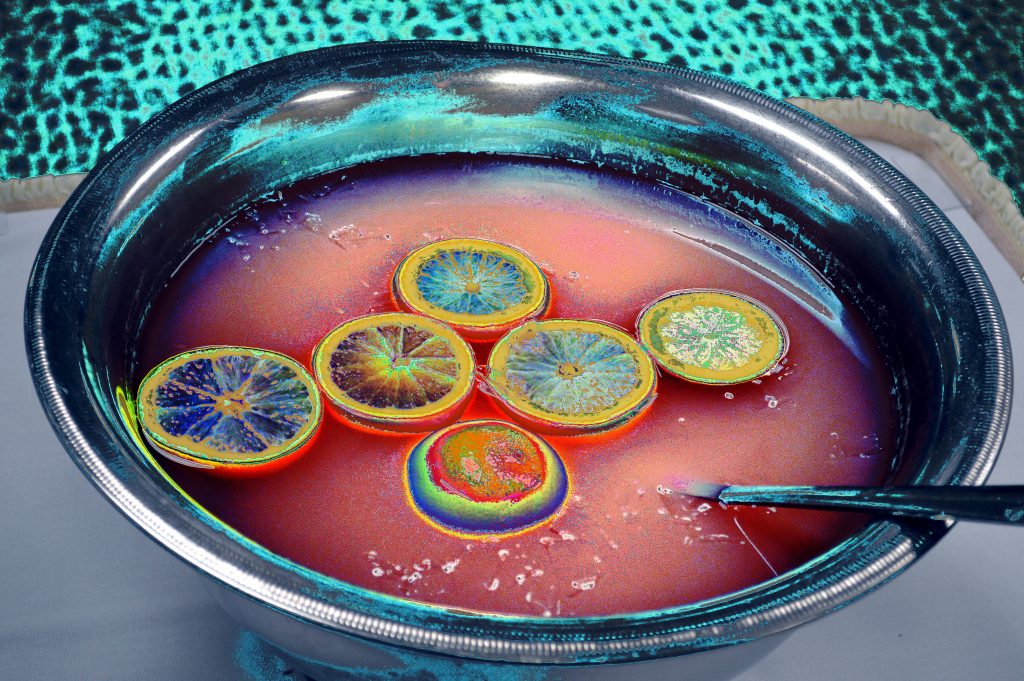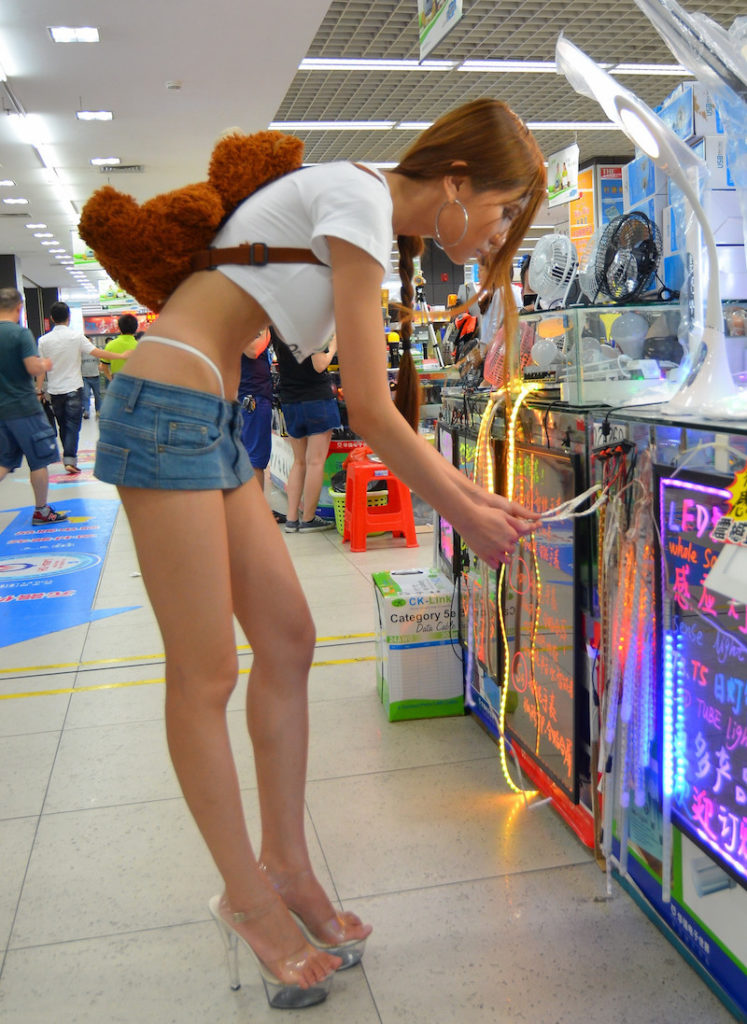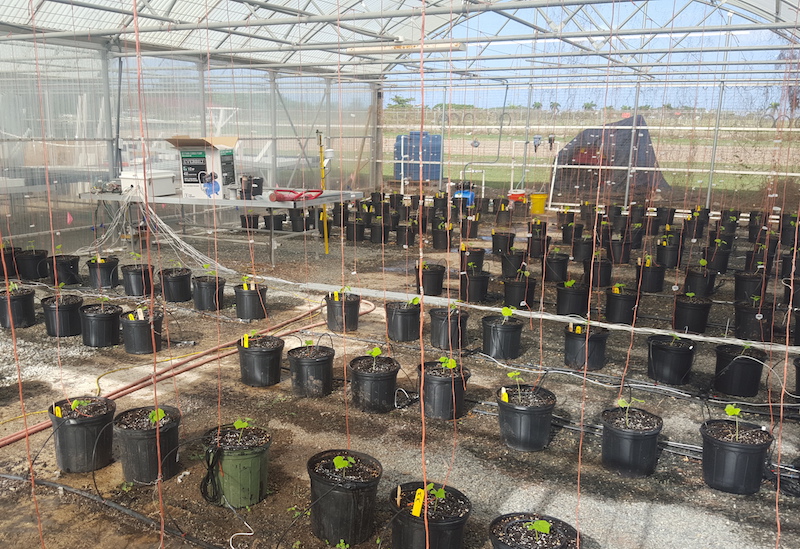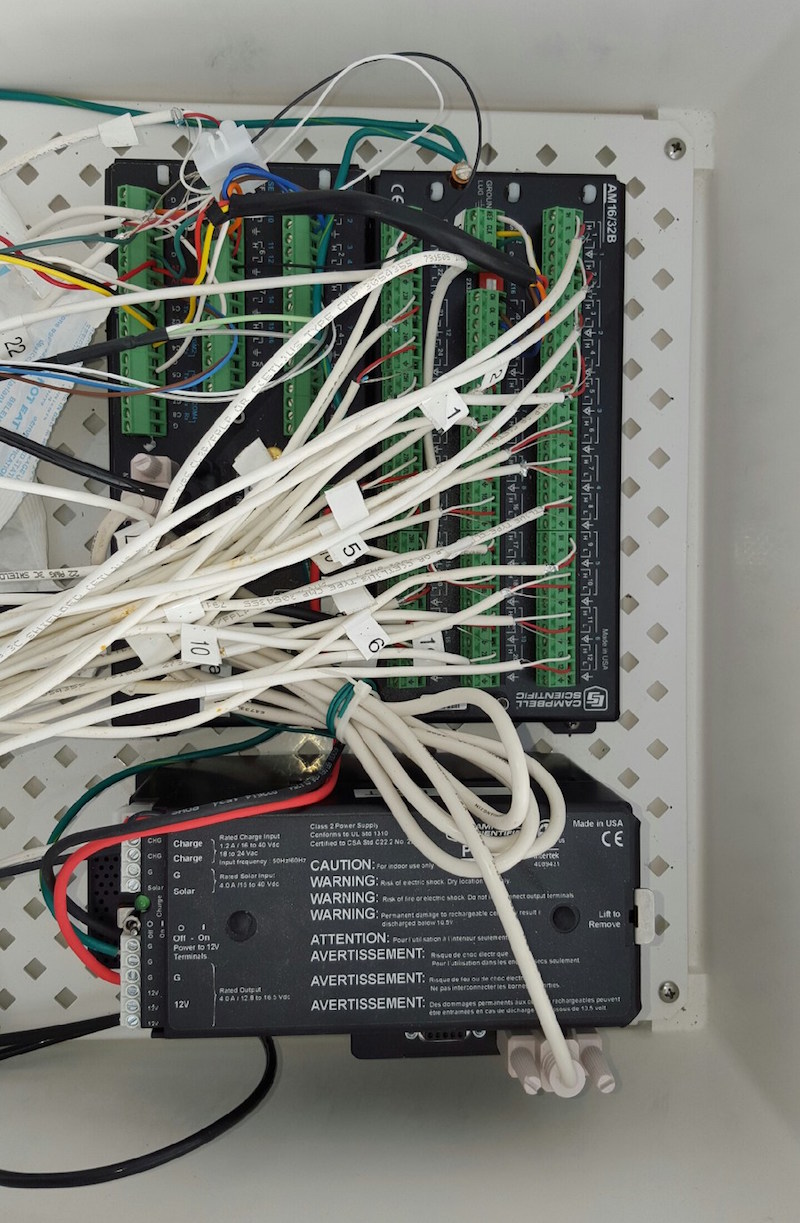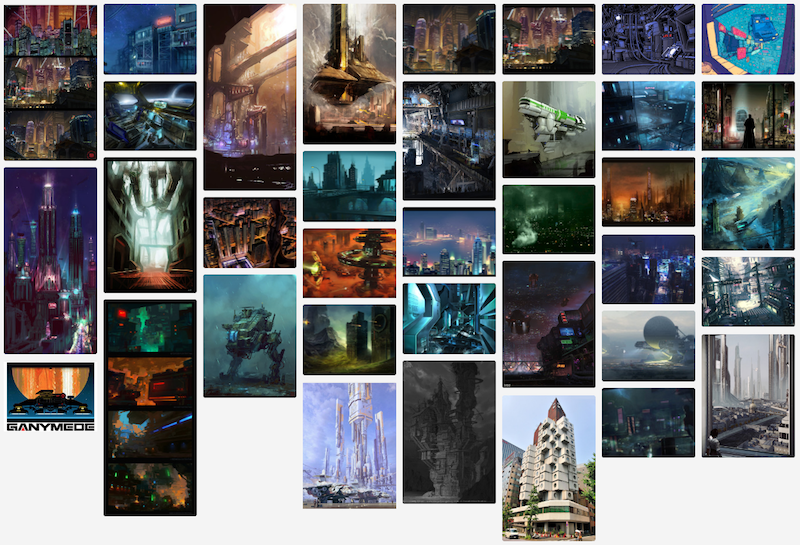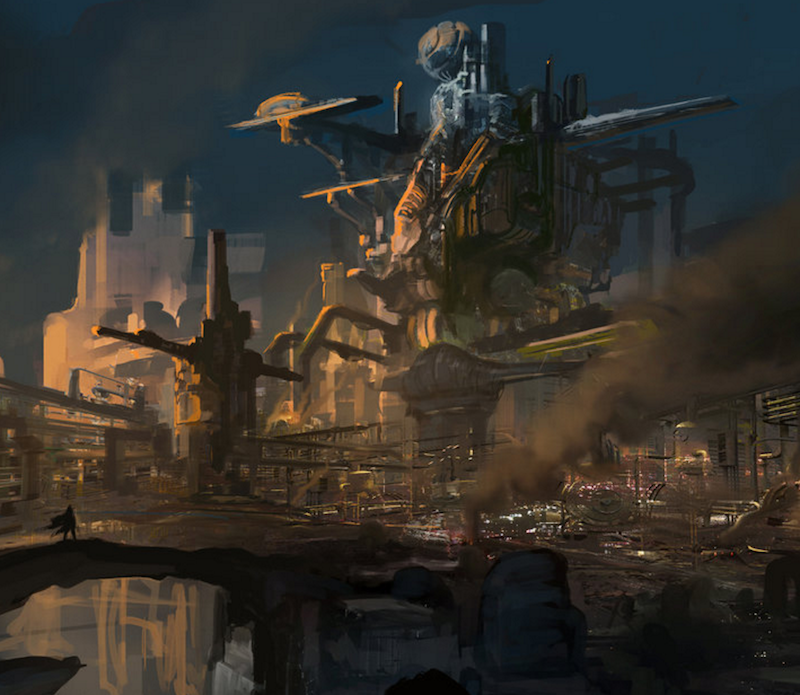Reddit user SexyCyborg is a web developer who lives and works in Shenzhen, China. She is also a 3D printing enthusiast whose projects include a wrist mount for her tiny drones and a hot-pink replica of her own body. As her username implies, SexyCyborg has body modifications, the most prominent being her breasts. She explains in her Pastebin FAQ:
“I could not get longer legs (height is most important in China) so I decided a big chest was the next best thing for looking better (or at least more interesting). I am a transhumanist with an interest in any kind of human augmentation. Any robot parts I can get I would — that’s why ‘Cyborg’.”
She tends to dress in very short crop-tops, tight denim skirts, and stripper heels. Because she combines technical prowess and unusual aesthetics, SexyCyborg has gotten copious attention — some of it admiration, but most of it slut-shaming. (Just look at the comments she’s responded to on Reddit.) She maintains that the norms are different in Shenzhen, and the puritanical reactions come from Westerners.
Again from the FAQ:
“I live in a city of 12 million and not a single other person has my style [of] clothing or my body mods. I don’t know a person in my profession who looks like me. As a creative person that is a source of pride, as person living in a society [where] we are taught from an early age to value conformity above all else it is also very challenging.”
Given all of this context, I reached out to SexyCyborg for an interview. We messaged back on forth on Reddit. As usual, the following exchange is lightly edited for readability.
Exolymph: How did you get into 3D printing?
SexyCyborg: In June 2015 we had our yearly Maker Faire here in Shenzhen. I decided to make some LED clothing for the closing night party — LED clothing is a tradition at Maker Faire parties. I didn’t really know what I was doing, just plugging some off-the-shelf stuff together.
I had a LiPo battery that I planned to just stick in my pocket, but some of my friends told me that was not safe. I’d used TinkerCAD a little bit, so I watched some more YouTube videos and made a little box for the battery. Actually took a lot of tries to figure out how to get the screws to work. It was a good learning experience. I borrowed a little Up! 3D printer that had been unused, sitting in a box at a friend’s place, and got to work.
The end result got a lot of attention, or I did, or some combination of the two. I’m not an engineer or anything, and seeing your picture online in other countries is pretty cool for a regular girl who’s never traveled further than SE Asia.
After that, well, if all you have is a hammer then everything looks like a nail. So I got into the habit of making little things for around the house or little toys for the neighbors’ kids. 3D-printed things are still a big novelty for most people, so you get a lot of face giving them as gifts and being able to use a 3D printer.
I try to make a point of focusing on functional prints. Too many people just download and print endless Yoda heads and other “standard” designs, which defeats the purpose of having a printer. It’s like being one of those guys who owns a fancy expensive DSLR camera and talks all about bodies and lenses but never really takes good pictures for people to enjoy.
Exolymph: Do you see parallels between software or web development and the process of designing and making physical objects?
SexyCyborg: I’m sure there are but all my code is for work and all my hardware stuff is for fun. The code stuff is just basic contract work — code monkey stuff. So I don’t get to be very creative. The hardware is where I get to do what I like. Using OpenSCAD is kind of fun though (in moderation) since it’s pretty much coding a physical object.
Exolymph: Have you ever thought about making objects for sale or anything like that?
SexyCyborg: Could happen. Our firewall issues here in China are making writing decent code pretty tough these days. It’s hard to stay up-to-date and hard to have any sort of a workflow when VPNs are so flaky right now. Even the best coders use Google — a lot. Mostly I prefer to open-source all my designs as a sort of statement to other Chinese about giving back to the online communities that have given us so much. If I could do that and still earn a living it would be great.
Exolymph: Do you resent the amount of curious attention that your body mods get? Some of it is pretty abusive, from what I’ve read in various Reddit threads, and then there’s a lot of ambiguous attention that could be interpreted positively or negatively. For example, I probably wouldn’t know about you if it weren’t for your body and style of dress, and I’m sure there are a bunch of other 3D printing hobbyists who I theoretically could be interviewing, but they don’t intrigue me like you do because the way you present yourself is perceived as provocative by Americans. You’ve said that you like attention and that you like being aesthetically unique, but I wonder if it ever feels like a burden, or just plain gets annoying.
SexyCyborg: Well, resent like, “My eyes are up here!”? No, of course not, that would be ridiculous. But as with tattoos, piercings, scarification, etc, there’s a line between, “Huh, not really my thing, but okay,” or even, “OMG you look so freaky!” and forming a circle around someone and screaming abuse.
If someone says, “Sooo, you know in the West we associate this style with sex workers, right?” I know they are not deliberately trying to get a rise out of me or be hurtful. If it’s more like, “Fuck you, whore, you should be ashamed of yourself,” as is very common, there’s no real discussion or curiosity. It’s about, “What can I say to hurt this person?”
Lots of comment threads for my projects or pictures start to look like what hackers call fuzzing, almost random combinations of epithets, references to sex work, to promiscuity, to rape, to my parents, to my culture — to see when something or some combination of things has an effect. I have a better firewall than most people, though. None of it is in my mother tongue, so it does not really run on bare metal, as it were.
I still feel I need to respond because if I don’t their narrative of “oh she dresses this way and then complains about attention” gets repeated elsewhere as if it were truth. So it’s more a question of using up bandwidth that could better be devoted to talking about the project, having a laugh about the silliness of it all, or working on more interesting things.
So yeah, it’s annoying, but what you guys consider “the internet” is just “the English internet” to me. The Chinese one is almost as large and they like me just fine. If a bunch of people in, say… Japan hated you, after a certain point it’s pretty easy to just not visit Japanese websites.
So when the “oh that’s fun” to “die in a fire, whore” ratio gets too unfavorable, I just stop posting. That’s what I did last year and I’m sure I’ll do the same again at some point. That’s just me, though. Obviously online harassment is a really complicated discussion in the West and not one that I can really comment on.
Exolymph: Do you have any new body mods planned? In a theoretical world where any tech was possible, what would you change / augment?
SexyCyborg: Cosmetically I’d love a butt, of course, but the implants look terrible to me and I don’t have anywhere near enough body fat to graft, which is how the best butt jobs are normally done. Injectable fillers are generally unsafe or at least poorly tested. I’d love longer legs but again — poor track record for safety and not looking to spend a year in recovery. So no cosmetic plans for a while.
As far as functional, I know someone with an NFC implant. It’s fun, but it seems pretty silly to poke holes in myself for under 1kb when I have 1600cc of empty space just sitting there. Enough for 1000 terabytes or so, assuming 128gb micro SD density. Maybe if they increase the NFC implant memory size a bit, or deal with the battery and charging problems of powered implants. Maybe something for audio in the mastoid bone with an SDR? Seems pretty far off.
Good magnetic implants would be awesome for fashion and wearables. Safe coated magnets should be a done deal by now. I have no idea why we have not solved this or what the hold-up is. I could keep thigh-high socks in place without clips or needing to pull them up; pubic and tailbone magnets would mean stringless bikini designs. Maybe something near the collar bone for a top or magnetic pasties. Polymagnets would deal with a lot of the issues around power. Rotate to release or hold at a fixed distance without compressing the skin. But we can’t get any of that without safe, well-tested, and durable coatings for the magnets.
Exolymph: Have you always been interested in technology and transhumanism?
SexyCyborg: Not really. Like most Chinese, I led a pretty sheltered life until I was eighteen or so. Fortunately my English is okay and I had access to VPNs, so I was able to learn more about the world than most, although I have never been to the West so I’m certainly not worldly or anything. But coming from both a very homogenous culture and a very high-tech region, the desire to be different from the ten million people around me and to use science to achieve some of that difference both had a big appeal as I matured.
Exolymph: What do you think of the breathless coverage of Shenzhen as a tech manufacturing mecca in American media? Does that reflect the reality of living there at all?
SexyCyborg: It’s nice if not entirely accurate. The whole “Maker City” thing is odd since we don’t have any. Wikipedia says, “Maker culture emphasizes informal, networked, peer-led, and shared learning motivated by fun and self-fulfillment.” In Shenzhen, making is either product development if you are an adult, or a structured curriculum if you are a child. There are almost no Chinese makers in Shenzhen doing it purely as a hobby. I’m pretty active in the community and I have not met them.
Our makerspaces — the few real ones we have — are primarily for educational purposes. We have a couple of places with laser cutters or a small 3D printer for the kids to learn on, but there’s no place you can go swipe a card and use real machine tools in the middle of the night like lots of other major cities have.
Because of this, Chinese spend rather a lot of time online speculating on how I am monetizing my adventures and what company is “actually” behind me. Even a year later, when it’s pretty clear that I would be the worst stealth marketing campaign ever, it still drives them nuts trying to figure out my “angle”.
As far as most Chinese people’s thinking, hobbies are for old people. If you have seen newspaper articles about actual Chinese makers — who have made homemade robots, dialysis machines, submarines, prosthetic arms — they are nearly all older or retirees. Young people in China just don’t have the time or freedom usually.
When you are young there is a huge amount of pressure from your parents to have children, which means getting married, which means buying a house, which in Shenzhen means making a lot of money. So most Chinese feel they really don’t have time for the “play” which really is the essence of making.
On the other hand, if you are working on a hardware startup or just want to get stuff made, then sure, I think Shenzhen is pretty unbeatable.
It was a pleasure to read SexyCyborg’s expanded thoughts. Go upvote her on Reddit.
Archival links, since social media pages are prone to disappearing:
